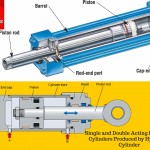Many people have been considering using solar arrays for their house. In fact, there are some neighbourhoods that require every house to partially use solar power. Solar power is one of the more effective ways to reduce our carbon footprint. Before planning to install solar power equipments, we should make a simple energy audit for our homes. We should know whether our investment will bring meaningful financial and environmental benefits.
We should calculate the amount of money we need to spend and how long the saving will be equal to our initial investment. Obviously, we should also consider effects of inflations.

We should consider hiring qualified contractors, if we are unable to install the equipments ourselves. Some solar power equipments can be easy to install, but others can be more complicated. Contractors will determine the ideal location of the solar panels. It doesn’t make sense to put the panels in areas that will covered by tree shades for a portion of the day. Contractors are also qualified to integrate the solar power with our home’s electricity grid.
It is important to review our contractors and check their previous projects. Some of the contractors could have properly completed solar power installations in nearby houses, so we should consider hiring their services.
We should be sure that the States Energy Commission has these contractors in their database. We may need to contact them and ask whether specific contractors are fully qualified. Because solar power is connected to our electricity installation, it should be in conformance with the state’s law and specifications.
Contractors are also experienced professionals and they should be able to provide us with an estimation of energy produced by the solar panel. Their information can be used to modify our financial plans. We will know realistically, how much money we will save by using the installation.
The contractor’s bid should include the projection of peak power capacity of the installation. This is determined by the location of the panels, the type of panels and the efficiency of the assembly itself. We should also know the total cost needed for warranty, permit, connection to the grid, installation and hardware. We should arrange for our system to be properly connected to the utility’s power grid. If applicable, it may be necessary for the contractor to apply for local permits.
Once we have made proper preparation, we should choose proper installers. Typically contractors won’t need more than a couple of days to complete the installations. Once the contractors have placed the panels on the roof or other locations, they will hook the system with a special meter that measures the total energy output. The contractor will connect the system to our main electricity grid.
However, we should make sure that our utility joins the net-metering program. It means, if we produce excess power from the solar panel, it will be credited on our account.
The Author is an expert in professional seo services. And can be reached via his website for any business seo related information and questions










Comments are closed.